читайте также
 German Economy to Rebound in 2026
German Economy to Rebound in 2026
 European Hotel Operating Profit: Margins, RevPAR and Costs
European Hotel Operating Profit: Margins, RevPAR and Costs
 US housing construction fell to its lowest level since May 2020
US housing construction fell to its lowest level since May 2020
 Snow Cyclone “Francis” in Russia: Widespread Disruptions at Airports and on Roads
Snow Cyclone “Francis” in Russia: Widespread Disruptions at Airports and on Roads
 Canada tightens scrutiny at land crossings: Asylum claims show a clear decline
Canada tightens scrutiny at land crossings: Asylum claims show a clear decline
 Wealthy Americans eye New Zealand luxury homes: Ban lift reshapes the top end of the market
Wealthy Americans eye New Zealand luxury homes: Ban lift reshapes the top end of the market
Вusiness / Real Estate / Investments / Analytics / Research / Belgium / Real Estate Belgium 04.08.2025
Translation: Real Estate Markets in Belgium and Luxembourg Shift Focus to Logistics and Housing
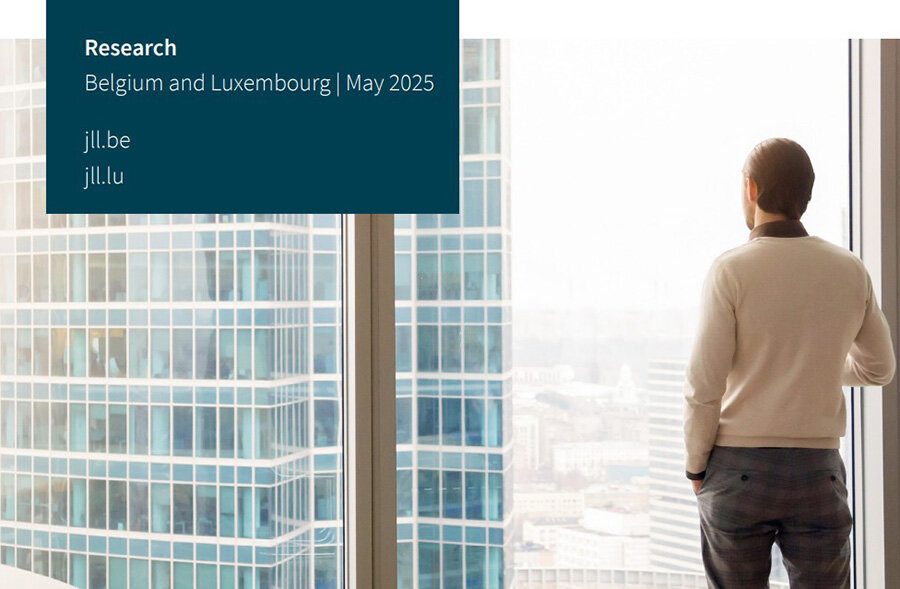
In Q1 2025, JLL and UPSI-BVS conducted a survey among real estate investors active in Belgium and Luxembourg. Respondents cited continued uncertainty around interest rates and strict credit conditions, while showing growing interest in logistics, residential properties, and high-ESG-potential assets.
Investment Volumes and Sector Distribution
In 2024, real estate investment in Belgium increased by 14% to €3 billion, mainly due to the €850 million City Forward portfolio transaction, which accounted for 83% of office activity. However, offices saw their share fall from 49% to 37% compared to the 10-year average. Residential investments rose from 8% to 17%, logistics from 12% to 23%, and hotels from 2% to 7%. Retail dropped from 17% to 8%, and alternative assets from 10% to just 2%.
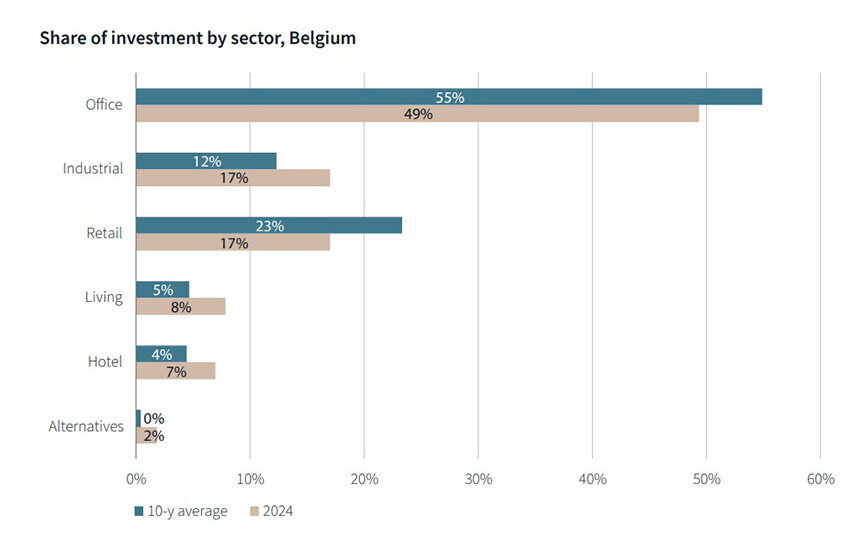
Luxembourg also saw a 14% rise in investments, reaching €606 million. Notably, 89% of this was directed at residential real estate—far above the historical average of 36%. There were no office or logistics deals, sectors that had previously accounted for 62% and 5% respectively. Retail remained stable at 1%.
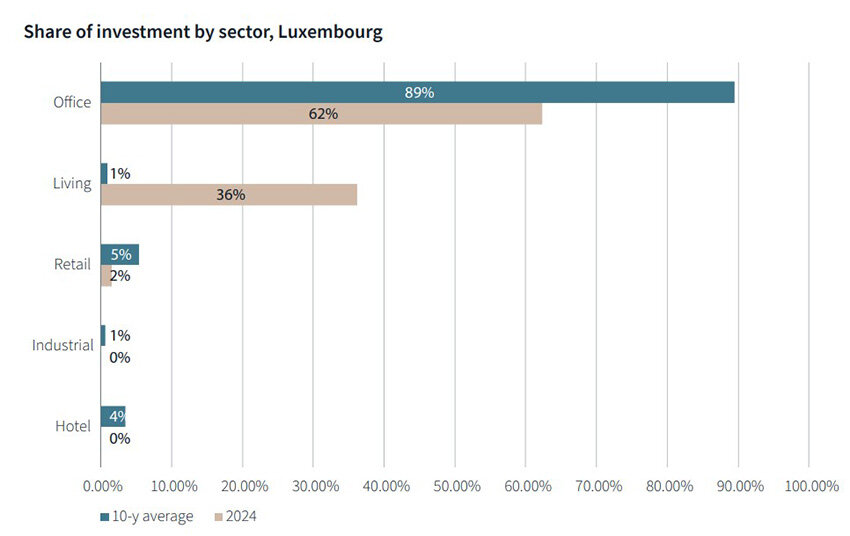
The share of domestic investors rose significantly: 85% in Belgium (up from 49%) and 50% in Luxembourg (up from 24%). This shift reflects both declining foreign interest and a reallocation of local capital toward defensive assets.
Strategies and Sector Priorities
Most investors plan to maintain or increase exposure to real estate in 2025. The preferred deal size is €15–25 million, close to the market average between 2020–2024. Around 30% target €25–50 million deals—typical for logistics (€25M) and office (€37M) assets.
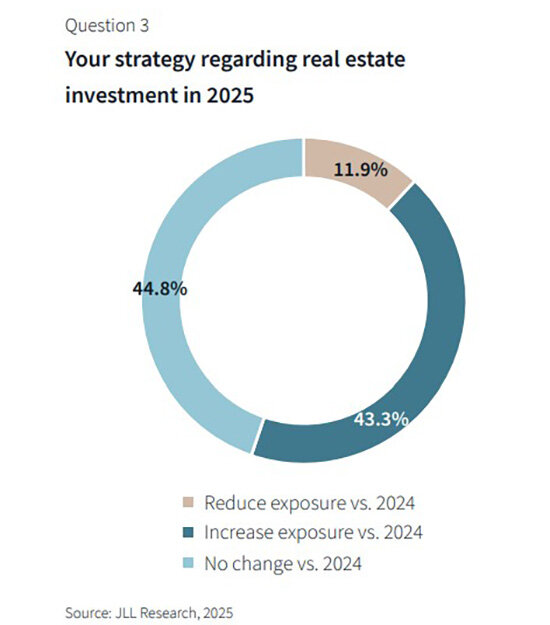
Industrial/logistics remains the most attractive sector, scoring 4.24/5 in short-term appeal due to strong demand, limited supply, and a transparent yield model.
Residential ranks second, scoring 3.97 now and 4.08 long-term—higher than logistics (4.06) and close to offices (4.14). Stability, social relevance, and potential public support drive interest. In Luxembourg, housing already dominates, taking up 89% of 2024’s total investment volume.
Offices remain less attractive for now (2.82/5), but expectations for 2025 indicate recovery (4.14), assuming reduced volatility and streamlined permitting. In Belgium, office permits can take 5–6 years to obtain.
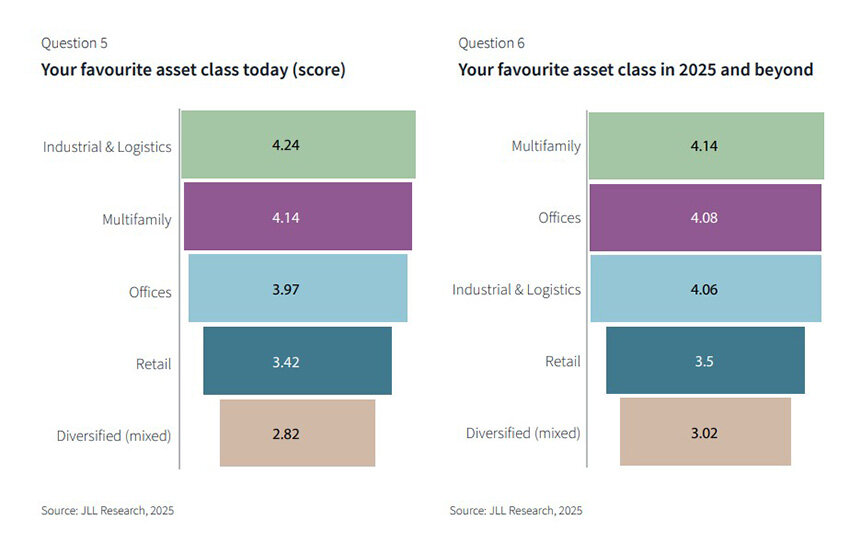
Alternative Real Estate Segments
When asked about alternative asset classes, 58.7% of investors favored student housing, citing undersupply in cities like Brussels, Antwerp, Ghent, and Leuven. Affordable housing ranked second (46%) as a lower-risk, socially supported investment. Data centers came third (36.5%) due to the expansion of AI and cloud infrastructure.
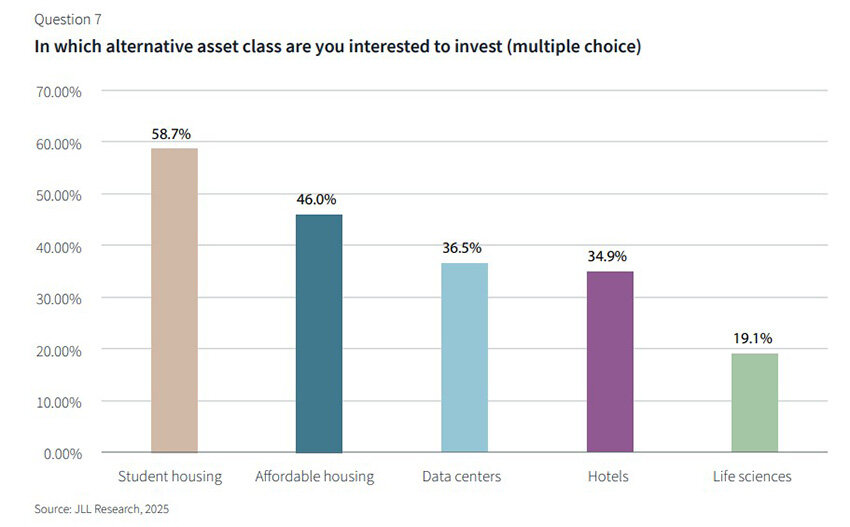
Although still a minor share of overall volume, these segments are increasingly seen as part of balanced investment strategies, offering resilience and alignment with tech and social trends.
Financing and Deal Conditions
Most investors expect interest rates to fall. Stability is anticipated at 2–2.5% ECB rates, deemed ideal by 41% of respondents. Another 44% favor a drop to 1.5–2%. Banks remain cautious, maintaining low LTVs and prioritizing environmentally compliant projects.
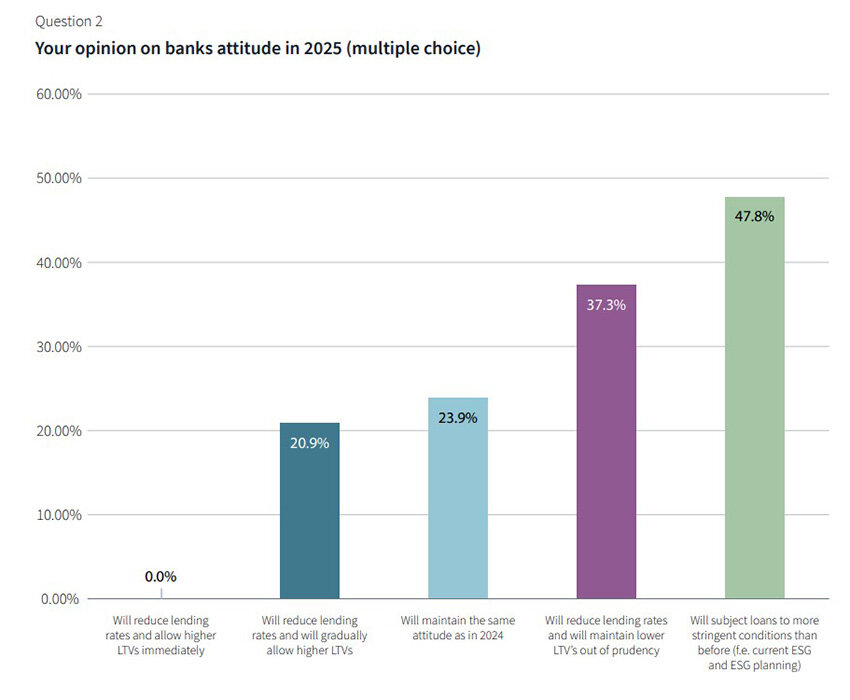
Yield Forecasts and Risks
In the office sector, 59% expect stable yields, while 32% foresee a 25 bps drop. In residential, half see stability, 37% a possible yield compression. Logistics saw a split: 50% expect stability, 27% foresee lower yields, and 9% are optimistic. Retail remains unpredictable.
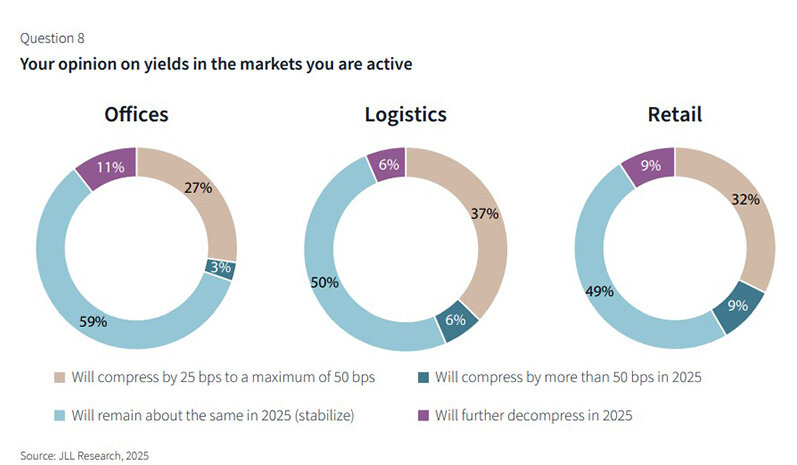
Top risks include global economic instability and trade tensions, especially after U.S. tariff threats post-April 2025. Administrative delays—like the 5–6 year office permit process in Brussels—remain a major concern. ESG fears and fund withdrawals are now seen as less urgent.





